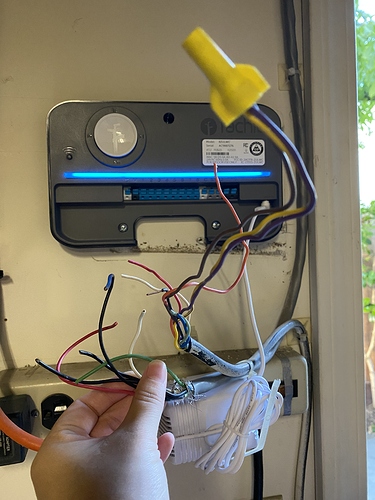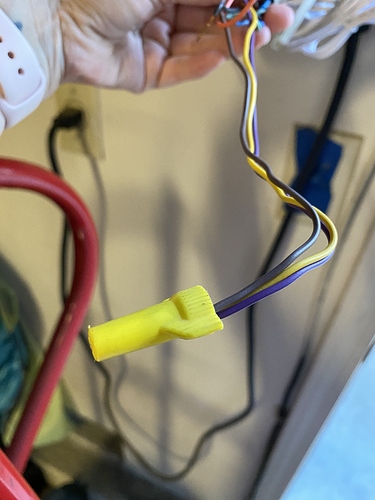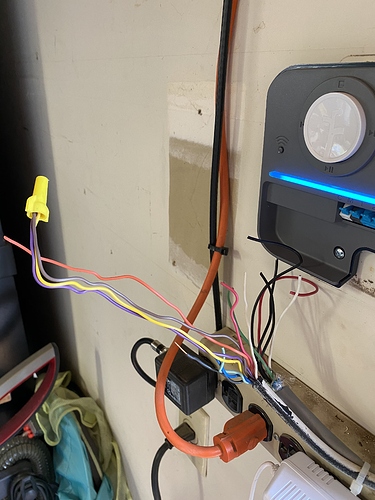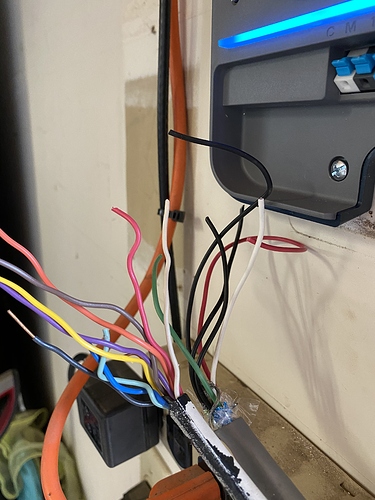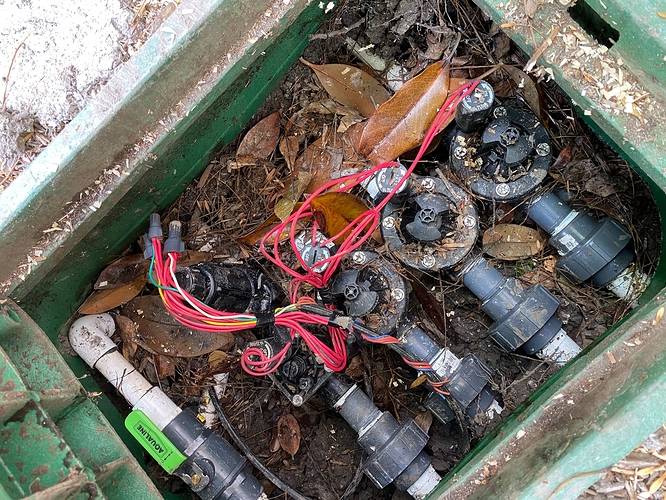I just purchased the Rachio 3 8 zone and asked my gardener to switch out my old system to the new R3. I think he did not realize what I was saying so he took the old one off the wall and left. I am now trying to install it myself but I don’t have a reference picture for the wires. Is there a way to figure out which wire goes with which zone?
Can you take a picture of the wires you do see?
Also, any pictures of the valves will be helpful.
You likely have a white wire which would be Common ©. Connect the remaining colored wires one at a time to zone 1 and then try running that zone. Check which zone is running and then use a label/sticker/tape to ID that zone’s wires. Once you’ve confirmed each zone move the wire to the zone # that you want them on.
If you have a rain senor(s) you should be able to check the wire colors at the sensor end. Sensors wires are frequently a thinner wire. Also look at your old controller and check to see if anyone left connection notes (e.g., Blue is zone 2).
The bundle with the multiple colored wires - white, red, orange, purple, yellow, dark blue, light blue, etc. - are probably your zone wires. White is usually the common wire and the other colors are for your zones. I don’t know what the other bundle of wires is for. Do you have a master pump and/or some type of sensor?
There are two cables, one (black with white paint) appears to be your actual irrigation wires. I’d try connecting white to Common © terminal as mentioned by @Alturia, while others to numbered zones on your controller. It is not clear if you have a master valve, if you can take a photo of your valves, we may be able to answer that question.
The cables combined with a yellow wire nut are likely extras, unused and “secured”. I’d leave them disconnected for now, until you get the rest of the system up and running.
The other cable with metal shielding, containing green, several black, white and red wire appear to come from somewhere near the ceiling? Try following the cable and see where it leads. For now leave it disconnected until we know what it is and it’s purpose.
So just a heads up. I just bought this house as a foreclosure and the previous owner didn’t leave any info. So kinda working blind. I know nothing about grass or sprinklers. I found one bundle of wires goes out towards this box in the ground. I cant figure out where the other goes.
@dorantr - Progress. Still a small mystery as I don’t think I saw a yellow and green wire in the same bundle back at the Rachio. Here’s where I’d start.
-
Undo the tape to identify which wires go to which solenoid. All of the solenoids will have one wire (doesn’t matter which one) that will be joined together (probably with the white wire) as the common wire. That wire will go to the Rachio C terminal.
-
I’d replace the existing wire nuts with water proof wire nuts like these (similar available at Lowe’s) and they come in various sizes (I’d get a large one for the common wire, for example) ->
https://www.homedepot.com/p/DryConn-Aqua-Orange-Waterproof-Wire-Connectors-4-Pack-62104/202889869
-
Next, I’d check out each zone by turning the solenoid in the “Open” direction about a quarter of a turn. This should allow the water to flow to that zone. If no water comes out of a zone, then there is a master valve, pump start relay or closed cutoff valve somewhere. If water comes out, then check the heads and write down what area is watered by that zone.
-
If the entire property is watered by those four zones, then you’re done. If there is an area that isn’t watered, and has sprinkler heads then there is one or more valves to be found.
-
Hook up the wire that is the common wire (guessing white) into a Rachio C terminal. Then hook up the appropriate colored wires from the box into the Rachio zone terminals (e.g. 1, 2, 3 or 4).
-
Then try to run each zone from the front panel manually - or configure the controller and do some quick runs from the Rachio app.
You may need an ohm meter (normally part of a volt meter) to diagnose the wiring if there is a cable change/change in wire color. But easily doable.
Welcome to the community.

